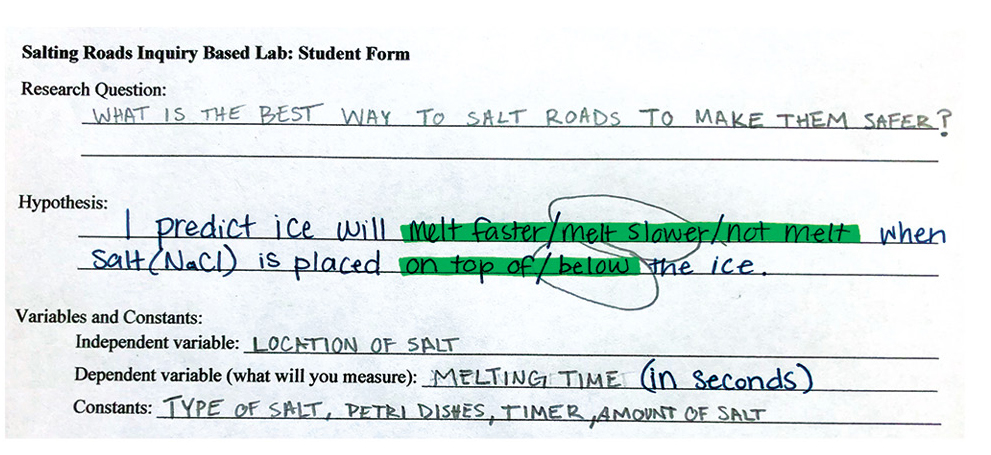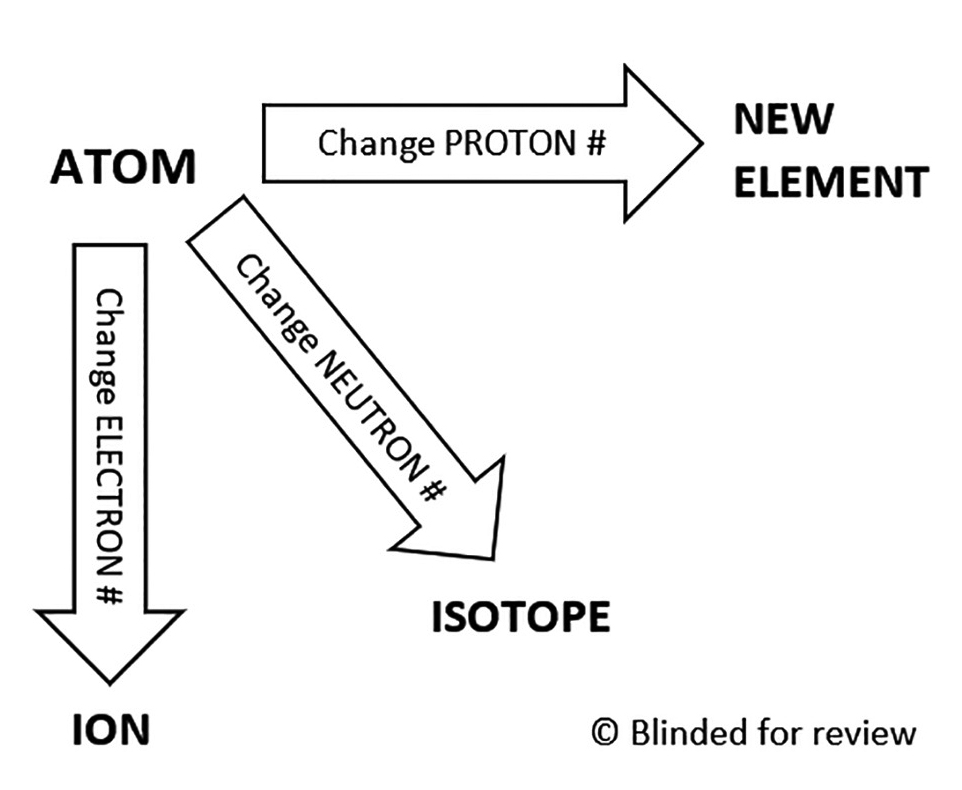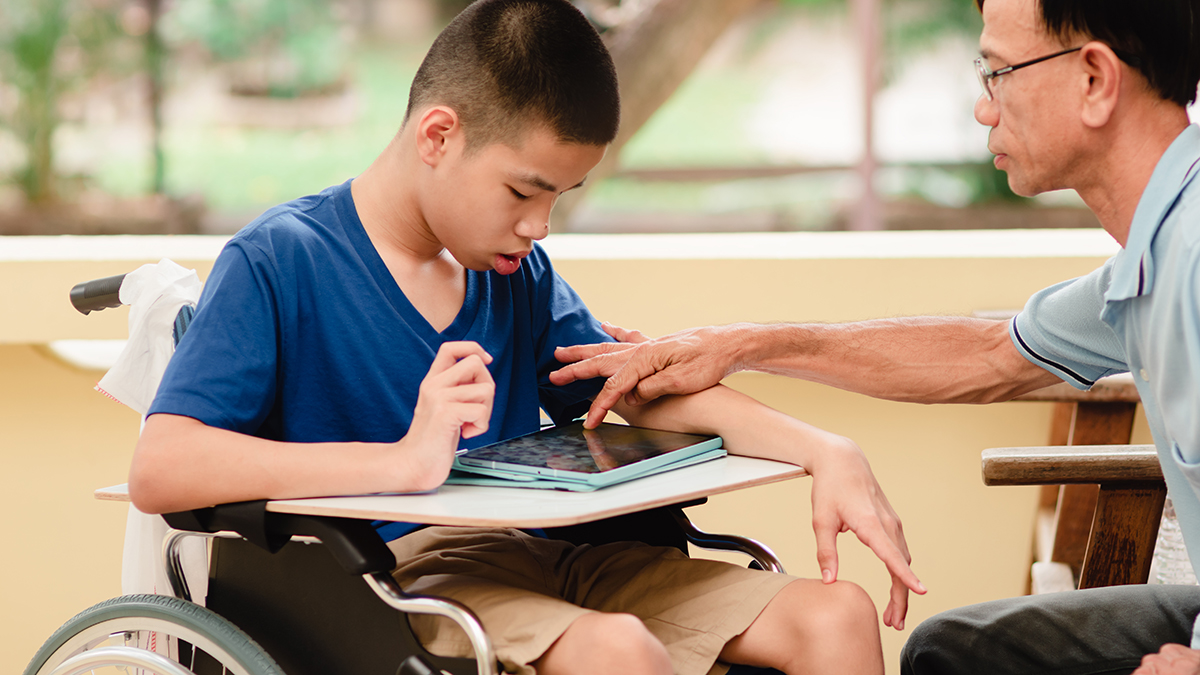feature
Making Inquiry Accessible for Students With Disabilities
Social justice has gained momentum over the past decades with a surge of attention since March 2020. Among many seeking social justice, individuals with disabilities often are forgotten or excluded. Currently, 7.1 million students ages 3–21 receive services under the Individuals with Disabilities Education Act (IDEA) (Hussar et al. 2020). Students with disabilities consistently scored below students without disabilities, in all age categories, on the 2015 National Assessment of Educational Progress (NAEP) science assessment (National Center for Educational Statistics 2018). However, poor science achievement does not reflect on the capability of individuals with disabilities but rather on the need for accessible science content. The discrepancy between students with and without disabilities exemplifies the ongoing social justice issue of equality in science practices provided to students with disabilities.
Currently, 95% of students receiving services under IDEA Part B are in the regular classroom setting for some portion of the day. In addition, more than 64% receive instruction in the regular classroom 80% or more a day (Office of Special Education and Rehabilitative Services (ED) 2021). With such high numbers of students with disabilities in regular classroom settings, science teachers need research-based and practiced information on accommodating students with varying abilities in the inquiry process.
The inquiry process
Many students with disabilities are either pulled from their science classes or are taught by teachers who may not be certified to teach science. The focus today on inquiry-based practices incorporated by The National Research Council (2012) into the inquiry process may not be part of the preparation for special education teachers. Essential science and engineering practices are in A Framework for K–12 Science Education: Practices, Crosscutting Concepts, and Core Ideas, the foundation of the Next Generation Science Standards (NGSS), yet how these are adapted for students with disabilities is limited. Pedaste and colleagues (2015) synthesized five general phases of the inquiry learning process: orientation, conceptualization, investigation, conclusion, and discussion. Ensuring teachers have tools aligned with how this process is effective for those with disabilities is essential.
Science and the inquiry process include skills that students with disabilities can have difficulty with, such as language and literacy, cognitive and conceptual functioning, and behavioral and social skills (Scruggs and Mastropieri 1993). For this reason, researchers and special educators have been skeptical of inquiry as a teaching method for students with disabilities (Mastropieri, Scruggs, and Butcher 1997). However, Rizzo and Taylor (2016), in a meta-analysis, found that when given supports, students with disabilities in an inquiry-based classroom show increased science achievement. One way to ensure this success is in making inquiry accessible for all students.
Making inquiry accessible
Designing accessible inquiry lessons requires student supports and the implementation of Universal Design for Learning (UDL). Student supports and accommodations change how content is presented and adapt the environment to meet student needs (Burgstahler 2011). Increasing accessibility does not diminish scientific content. Instead, the learner gains access to content, increasing equity for students with disabilities.
The supports detailed in Table 1 increase accessibility through UDL in an inquiry-based learning process. The table provides supports for all phases of inquiry, followed by supports for each step of inquiry. Teachers can use these tools as a quick reference guide to support all students in an inquiry science classroom, such as students with learning or behavioral challenges, English language learners, or students struggling with inquiry practices. The degree to which the strategies and supports are implemented will vary by the specific needs of your students. For example, when supporting students with disabilities, supports should be more explicit, broken into small steps, and occur more frequently.
Rearranging or combining the following supports and phases to improve accessibility for a student or the entire class increases educational equity. Teachers should begin this transformation in an area of comfort. When designing a lesson, reach out to a special education colleague for ideas, or if worried about language aspects of the lesson, consult the speech and language teacher. Another simple beginning can be to teach reference tools and resources such as graphic organizers, sentence starters, and language-based cues instead of assuming mastery of these basic skills. Just as teachers teach routine skills for classroom and safety procedures and lab equipment, inquiry-based learning needs the same approach to instruction.
Preparing for inquiry
Review expectations
To improve and maintain positive behavior during inquiry-based instruction, teachers should frequently review expectations throughout each phase. Expectations cover behavior, directions, social interactions, requesting help, use of equipment, and any other basic needs for engagement. Once students have the basics, then teachers should follow with frequent use of reinforcement and encouragement. Different students may need different amounts and types of reinforcement. As students build confidence and stamina with inquiry-based approaches, celebrating the smallest achievement for students who struggle the most—such as not giving up, asking for help, bringing materials, or working with partners—can help with engagement and self-esteem in science content.
Visual and audio cues provide extra support when reviewing expectations and providing directions. When working on specific skills that have been explicitly taught and reviewed, I attach a short and discrete list of expectations to their lab paper (see Figure 1). Breaking down activities and assignments into small manageable tasks (chunking) can reduce stress and anxiety. For example, I break inquiry activities into parts where Part 1 may be making connections, Part 2 lab design, Part 3 data collection, Part 4 data analysis, and Part 5 drawing conclusions. Or I break down parts into smaller steps similar to a check-off format such as assigning roles, gathering materials, setting up, observing, recording data, and cleaning up. Additionally, when students work online, preview websites and resources. Look for simple language, an easy navigation format, and model website navigation ahead of time. Provide a list of suggested or class-made search terms for students needing additional supports.
| Table 1. Supports for the inquiry process. | ||||||||||||||
|---|---|---|---|---|---|---|---|---|---|---|---|---|---|---|
|
Station expectations
- Noise level: 6-inch voice (quiet)
- 3 people or less at a station
- Stay with your group
- Go to an open station
- Keep phones put away
- Socialize after stations
Create a culture of self-advocacy
Inquiry-based learning uses various thought processes (i.e., reasoning, analyzing, problem-solving) and executive functioning skills (i.e., metacognition, working memory, organization), which may be deficits for students with disabilities. Provide frequent check-ins and coaching to support students as they navigate the inquiry process. To increase student independence, build in opportunities for students to self-advocate and model self-advocation. I do this by asking students individually, in small groups, and as a whole-group if they have questions multiple times throughout all stages of activities. Praise students who advocate for themselves. Additionally, as a co-teacher, I model self-advocacy by raising my hand and waiting to be called on. I say, “I realized I am confused about ______. You mentioned ______, how do you know when to _______?”
Plan with UDL in mind
Universal Design for Learning (UDL) is a framework designed to make content accessible to all learners and is broken down into three guidelines: multiple means of engagement, representation, and action and expression (CAST 2018). Teachers can apply UDL to all phases of inquiry. For example, using live closed captioning during the lesson or lecture and not just during a video supports literacy, English language learners, focus and attention, and comprehension. For students in a digital learning environment, record directions to increase student independence by giving them the opportunity to replay instructions as needed. Also, providing students with multiple means of expression or student choices such as verbal or written communication or demonstration allows students to demonstrate their understanding in their most capable formatting. For example, during an experiment, allow students to record observations through a drawing or dictation. Or rather than having students write out their conclusions, allow them to record themselves reviewing the findings.
Inquiry step 1: Orientation
Activate prior knowledge
As the first phase in the inquiry process, orientation increases motivation and engagement for students (Pedaste et al. 2015). When beginning a new topic, assume students have had limited experiences with the topic. Students with disabilities can struggle with recall, making connections, and receptive language. To assist students in making connections, provide visuals, even a Google image search, and a class discussion of similar topics/experiences. For example, I connect covalent polarity to child custody. I say polar-covalent is like unequal custody (i.e., weekdays at Dad’s house and every other weekend at Mom’s), and nonpolar-covalent is equal custody (i.e., one week at Dad’s, one week at Mom’s).
Connect to students’ futures
Students with disabilities can struggle to see how different learning objectives relate to them, especially if they relate to a career they do not think is possible. However, relating the objectives/topic to students’ daily lives or near future can add additional motivation and authenticity. For example, chemistry can connect to future careers that students may not even realize have a science foundation, such as welding, hairdressing, or firefighting.
Pre-teach vocabulary
Pre-teaching and inquiry practices can be conflicting concepts. However, vocabulary needs to be pre-taught for struggling students during the orientation phase. Pre-teaching and reviewing vocabulary provides students with more time to focus on content than vocabulary acquisition during inquiry. I am not suggesting all vocabulary be pre-taught; instead, pick an important term that is essential for understanding but may be unfamiliar to students. For example, when discussing polarity, I do not discuss how polarity relates to electrons, bonding, or chemistry in any way. Instead, I pre-teach polarity as having two ends or poles, which can have positive and negative properties like Earth or a battery. Pre-taught vocabulary is essential to an inquiry lesson, activity, or concept but does not detail the learning objective, allowing students to engage in authentic inquiry.
Inquiry step 2: Conceptualization
Key Words and Sentence Starters
During conceptualization, students design research questions and hypotheses (Pedaste et al. 2015). Students with disabilities can struggle with generating ideas and with expressive and written language. Students can have difficulty generating ideas for many reasons: lack of focus, expressive language deficits, or issues organizing thoughts. Developing keywords or phrases and sentence starters can help gather students’ thoughts and provide a starting point. Developing these tools can occur before or during the lesson through whole group, small group, or individual instruction. Sentence starters that I have developed with my students are “If….then…,” and “I predict...” If I have a student who needs heavier support, I will expand on the sentence starter to fill in the blank format, which can be prepared ahead of time or done one-on-one with a student. Providing the additional structure allows students to participate while developing thought generation and organization. For example, Image 2 illustrates a teacher-student sculpted sentence, where the student circled their predictions. Highlighting is used for the circling options for clear differentiation for the student.

Sample structured hypothesis.
Visuals
Using teacher or student-made graphic organizers provides organization for students to analyze relationships or review content. Visual schedules or an agenda checklist can help students stay on track and know what steps are needed to move to the next phase during labs. Image 3 is a finalized rendering of a class-created visual illustrating how the change in subatomic particles impacts an atom.

Atomic structure flow chart.
Inquiry Step 3: Investigation
Review expectations, again
During investigation, students explore concepts and phenomena and then analyze the related results (Pedaste et al. 2015). Before beginning any activity, students need clear expectations provided in multiple formats. Give any expectations or directions both verbally and in written form using clear, simple language. Show examples or reference the actual equipment, datasheets, or checklists. Frequently check for comprehension while reviewing expectations throughout the investigation phase. In addition, providing and referencing a visual schedule or checklist of essential steps or directions either individually or per group can keep expectations clear and provide students with direction. These strategies can help improve behavior and productivity during less structured times such as the investigation phase.
Utilizing Visuals
Students with disabilities benefit from multiple means of representation and repetition. Using simulations, virtual reality, and games collectively across a topic can increase exposure and even expand on concepts beyond the classroom. For example, when covering the abstract concept of trophic cascades, the AR Perpetual Garden App (a free resource) allows students to visually and auditorily experience the impact of deer overpopulation on the environment.
Inquiry step 4: Conclusion
Organizing thoughts
The conclusion phase often is the final phase of inquiry. Students draw conclusions from the data and compare them to their research questions and hypotheses (Pedaste et al. 2015). Students with disabilities can struggle to connect to core ideas and crosscutting concepts across assignments and within activities. Graphic organizers that relate the data to the research questions and hypotheses can help students make connections throughout the inquiry process. Graphic organizers such as a flow chart can outline steps in the thought process and guide students to make conclusions about their data. Explicitly teach and model graphic organizers before the lesson and reference them during the lesson. Sentence starters and writing guides help students express their conclusions regarding their data. For example, Figure 4 is a highly structured writing guide designed to help students practice Claim, Evidence, and Reasoning after an inquiry lab. Not all students need heavy supports. Instead, you can provide a writing guide that serves as an outline, only without sentence starters or reminders of requirements.
Conclusion graphic organizer.
Write a recommendation as to which salt should be used in Oldham County next winter. Justify your recommendation with Claim-Evidence-Reasoning (CER).
Part 1: Brainstorm
Which salt will be the best?
Part 2:
Write 1–2 paragraphs
(1 paragraph = 7 sentences)
- Indent first line of each paragraph
- Use capital letter at the beginning of each sentence
- Use ending punctuation
Claim—Which salt will be the best (based on experiment, cost, toxicity, and other hazards)?
- Sentence started: Oldham County should use _____ salt next year, to keep our roads safe.
Evidence
- Use data from experiment comparing the types of salt
- Describe the cost
- Describe the toxicity
Describe the hazards and impact on the environment
Reasoning—explain why you chose your salt based on the evidence above
Conclusion—sum it up
Inquiry step 5: Discussion
Facilitation
The discussion phase can happen anytime during the inquiry process (i.e., generating questions, interpreting data, and supporting claims with evidence.) Additionally, students review and reflect on their learning and communicate this to their peers, who then provide feedback (Pedaste et al. 2015). Teachers facilitate discussions by providing and modeling wait-time. Offering sentence starters will provide students with a stronger foundation for discourse and create a safe learning environment where students feel comfortable sharing and learning from each other (e.g., “I predict…,” “Based on ___ I conclude…,” “I agree/disagree because…”). When preparing for a whole-group discussion, if I have a student who I know will struggle when put on the spot, I tell them the question or discussion topic in advance. Providing information in advance provides additional processing time without a pause in instruction. Additionally, I use Think-Pair-Share to discuss and learn collaboratively before asking students to share in whole group. Paired discussion allows students with idea generation and making connections while practicing sharing without the high stakes of whole-group discussion.
Varying Formats
Conduct the discussion phase in various formats such as whole- or small-group discussions, a written reflection, a shared digital document, or a short video recording. If in a class with a wide range of ability levels, group students by ability to target a key skill or use mixed ability groups to strengthen skills.
Conclusion
Providing access to science content for students with disabilities increases equity and social justice in the education system. All students, including those with disabilities, deserve access to science content and future opportunities. Providing supports and accommodations while teaching essential science practices such as inquiry makes access to opportunities possible for students with disabilities. While science inquiry and special education practices have historically been out of alignment (Mastropieri, Scruggs, and Butcher 1997), supported inquiry can improve science achievement for students with disabilities (Rizzo and Taylor 2016). Table 1 illustrates supports for inquiry; however, the supports can be implemented for all students to varying degrees to increase accessibility and equity in inquiry-based practices. ■
Shalice Kohnke (skohnke91@gmail.com) is a doctoral student in exceptional education at the University of Central Florida, Orlando, FL, and was recently named as a 2022 DRK-12 (Discovery Research PreK-13) U.S. National Science Foundation CADRE Fellow.
Disabilities Inclusion Inquiry Pedagogy Professional Learning Teaching Strategies



